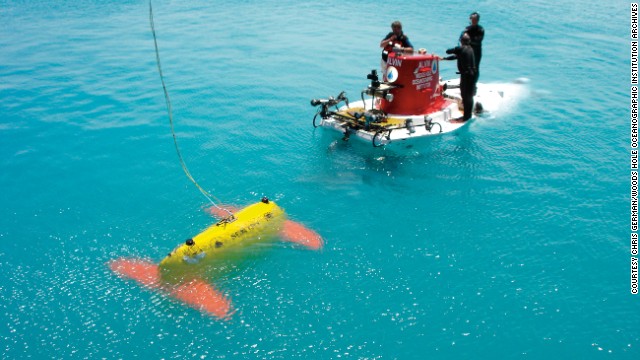STORY HIGHLIGHTS
- Oceans make life on Earth possible providing oxygen and regulating our climate
- Much of our oceans remain unexplored but new technology is advancing knowledge
- Machines like Woods Hole Oceanographic Institution's "Alvin" explore deep ocean
- Woods Hole's Center for Marine Robotics pioneering new underwater vessels
Chris German is a marine geochemist and Chief Scientist for Deep Submergence at Woods Hole Oceanographic Institution. Working with the National Deep Submergence Facility, he advises on topics ranging from tele-presence and Autonomous Underwater Vehicles to the recent upgrades to the Human Occupied Vehicle, Alvin. Despite most humans' land-centric view, Earth is an ocean planet. The global ocean covers more than two-thirds of our planet's surface and makes life as we know it possible: it produces half of the oxygen we breathe, helps regulate our climate and provides the single largest habitat for life on Earth.
Yet, with nearly 2 miles or 3,000 meters of water covering more than half the surface of our planet, much of this vast realm remains unexplored and unexamined. But not unconsidered.
 "What happens in the vast, deep ocean, out of sight and beyond the reach of sunlight and satellites?" asks chief scientist Chris German. He is on a mission, with his team at the Woods Hole Oceanographic Institution, to find out. They developed Sentry, a robotic underwater vehicle used for exploring the deep ocean.
"What happens in the vast, deep ocean, out of sight and beyond the reach of sunlight and satellites?" asks chief scientist Chris German. He is on a mission, with his team at the Woods Hole Oceanographic Institution, to find out. They developed Sentry, a robotic underwater vehicle used for exploring the deep ocean.
No comments:
Post a Comment